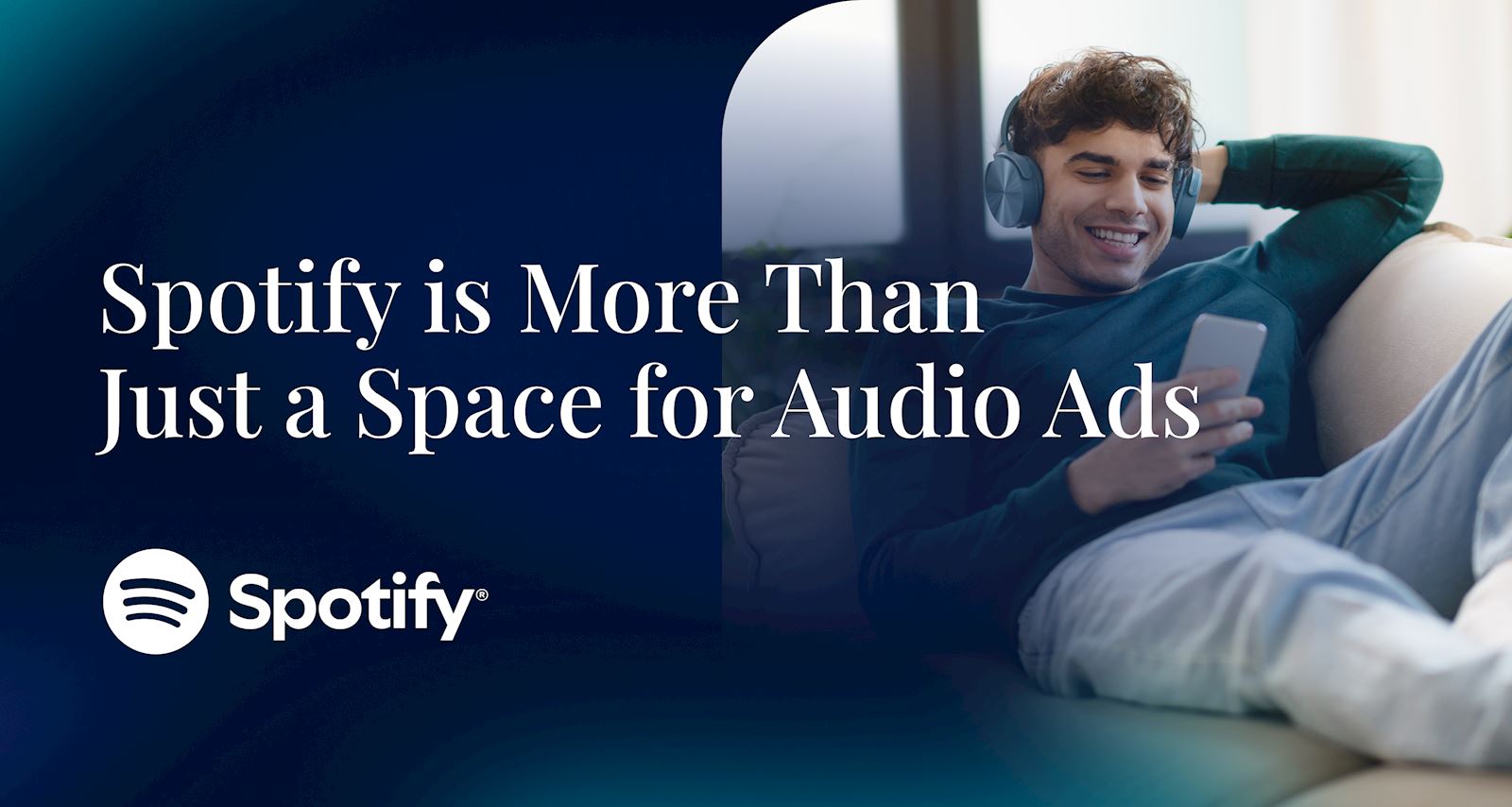Spotify is Evolving Into a Full-Funnel Ad Platform
Published by Spinutech on July 8, 2025

What’s new with Spotify?
The short answer: A lot — especially if you’re a marketer already active in this space.
The long answer: During their recent “New Ways to Buy, Create, and Measure” session, Spotify introduced several new features that can make your advertising efforts more effective, from better targeting to easier ad creation. But beyond product updates, it’s important to consider what these changes mean strategically for your media mix and funnel performance.
If you’re evaluating how Spotify fits alongside Meta, Google, and YouTube investments — whether it complements or competes with those channels — keep reading to learn more about why these updates matter for your overall marketing strategy.
Spotify Captures Active Attention Like Never Before
Not all attention is created equal. As marketers, we aim for active engagement — when users are meaningfully interacting with content, rather than passively tuning out. Spotify has a distinct advantage here. Unlike scroll-based platforms where attention can be fleeting, Spotify ensures ads are shown when users are actively engaged, whether listening to music, watching videos, or interacting with other content.
Research from Adelaide, Lumen, and Amplified Intelligence shows Spotify generates 34% more active attention compared to TV on-demand, 55% more than online video, and 503% more than scrollable social media. Spotify’s internal data also indicates video ads garner five times more attention than social media ads, while audio ads see four times more engagement.
The takeaway: Spotify is a high-attention environment that delivers meaningful engagement and can drive performance when integrated strategically into your funnel.
New Ads Manager Updates Are Music to Marketers’ Ears
Spotify’s Ads Manager platform has undergone several exciting updates that make it easier to build and measure full-funnel campaigns. These enhancements also signal Spotify’s intention to play a larger role in programmatic and performance media:
- New Campaign Objectives: Spotify now supports lower-funnel goals like app installs and website traffic, alongside traditional upper-funnel metrics like reach and impressions. This means you can optimize campaigns across the entire funnel — from top of funnel (ToF) brand awareness to bottom of funnel (BoF) conversions.
- Enhanced Targeting: With custom audiences and lookalike modeling, Spotify’s targeting capabilities now align with what marketers expect from programmatic DSPs and social platforms, enabling more precise audience segmentation and efficiency.
- Ad Creation Made Easy: Spotify has streamlined ad creation, offering tools including Gen AI-powered scriptwriting and voiceover for audio ads. This reduces production friction and accelerates creative testing — a key advantage for scaling campaigns effectively.
- New Display Ad Format: Alongside audio and video ads, display ads are now available through Ads Manager, allowing for integrated, multi-format campaigns across the funnel.
Upgraded Measurement Tools for Better Insights
Spotify is building out measurement infrastructure that rivals other programmatic channels:
- Spotify Pixel: Tracks website traffic and conversion events, enabling robust lower-funnel optimization.
- Spotify Conversions API: Provides cross-channel tracking across web, app, and offline touchpoints, helping close attribution gaps.
- Spotify Brand Lift: Native and free, this tool measures upper-funnel metrics like awareness and consideration — key for validating ToF impact.
- Third-Party Integrations: Partnerships with Kochava, Appsflyer, IAS, DoubleVerify, and 15+ tracking vendors enhance viewability, verification, and reporting.
These tools empower marketers to view Spotify not just as a brand awareness platform but as a performance media channel that delivers measurable ROI.
What Does This Mean for Your Media Mix?
For marketers already investing in Meta, Google, YouTube, and other programmatic channels, Spotify’s evolution raises important strategic questions:
- Does Spotify complement your existing funnel by driving incremental attention and conversions? Or does it compete for the same budget and audience, requiring trade-offs?
- How does Spotify’s unique attention-based inventory compare in terms of KPIs like engagement and conversion rate versus scroll-based platforms?
- Could Spotify’s new programmatic targeting and measurement tools reduce reliance on external DSPs?
The answer depends on your goals and current media setup. Spotify offers a distinct blend of high-attention environments combined with increasingly sophisticated programmatic features — making it a unique option for both ToF brand-building and BoF conversion-focused campaigns.
Spotify Is No Longer Just a Space for Audio Ads
With new tools for targeting, creative development, and performance tracking, Spotify is positioning itself as a full-service advertising solution. Marketers can now use Spotify to reach audiences at every stage of the buyer’s journey — leveraging programmatic precision and active attention to boost ROI.
If you’re looking to expand your marketing reach through Spotify or want to better integrate it within your existing media mix, let’s chat.